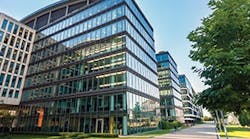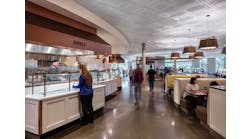The growing desire for healthier and more sustainable facilities and surrounding spaces has motivated the recent publication of the Urban Land Institute’s (ULI) Building Healthy Corridors: Transforming Urban and Suburban Arterials into Thriving Places.
Looking for opportunities to improve the overall health of the surrounding community, Building Healthy Corridors identifies strategies to rejuvenate arterials. The publication suggests linking the needs of facilities and the communities located nearby, which will positively impact health and wellness more holistically.
“Across the United States, cities are looking for ways to become livable, sustainable, economically vibrant and healthy,” says ULI Senior Vice President Rachel MacCleery. “However, nearly every community is challenged by the prevalence of automobile-centric commercial corridors characterized by a wide road with multiple lanes, limited transit service, buildings separated from the street by parking lots, unsightly utility poles and wires, a lack of trees and vegetation, and narrow, poorly-maintained sidewalks. Commercial corridors should be considered assets that can be redeveloped to support civic life, enhance economic development and serve as neighborhood resources.”
The report comes from work conducted through ULI’s Healthy Corridors project, which seeks to shape projects and places to improve the health of people and communities. Four demonstration corridors in Denver, Boise, Los Angeles and Nashville have informed the report.
The publication defines a healthy corridor as one with land and services that facilitate healthy lifestyle choices and promote social cohesion. Healthy corridors often include:
- Improved access for pedestrians and cyclists, such as walkways and dedicated bike lanes or trails
- Safe, inviting sidewalks and streetscape amenities such as benches, trees and ample lighting
- Vibrant retail and healthy food options
- Improved parking strategies such as shared parking
- High-quality, safe open space
- Engagement of residents and local business owners
- Accommodations for vulnerable groups including children, the elderly and the disabled
- A distinguishing identity that draws on the culture and/or heritage of the community
“Through corridor revitalization that is focused on health, communities can become more economically vibrant, equitable, sustainable and attractive places,” states the report. “The healthy corridors approach helps all involved in corridor redevelopment and community revitalization – the public sector, private sector, nonprofits and neighborhood advocacy groups – work together to create a better future.”
For more information about how facilities can contribute to healthier communities, read Building Healthy Corridors at www.uli.org.


